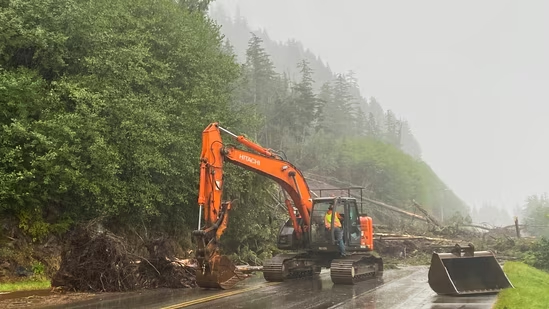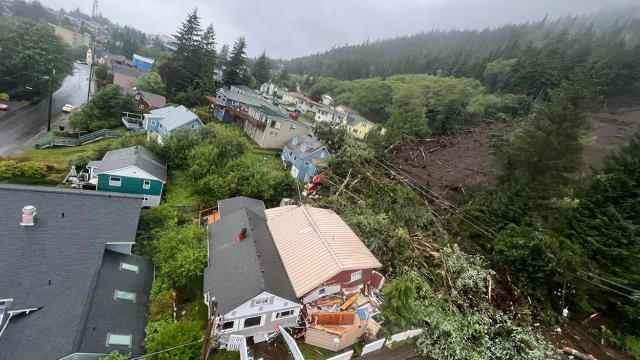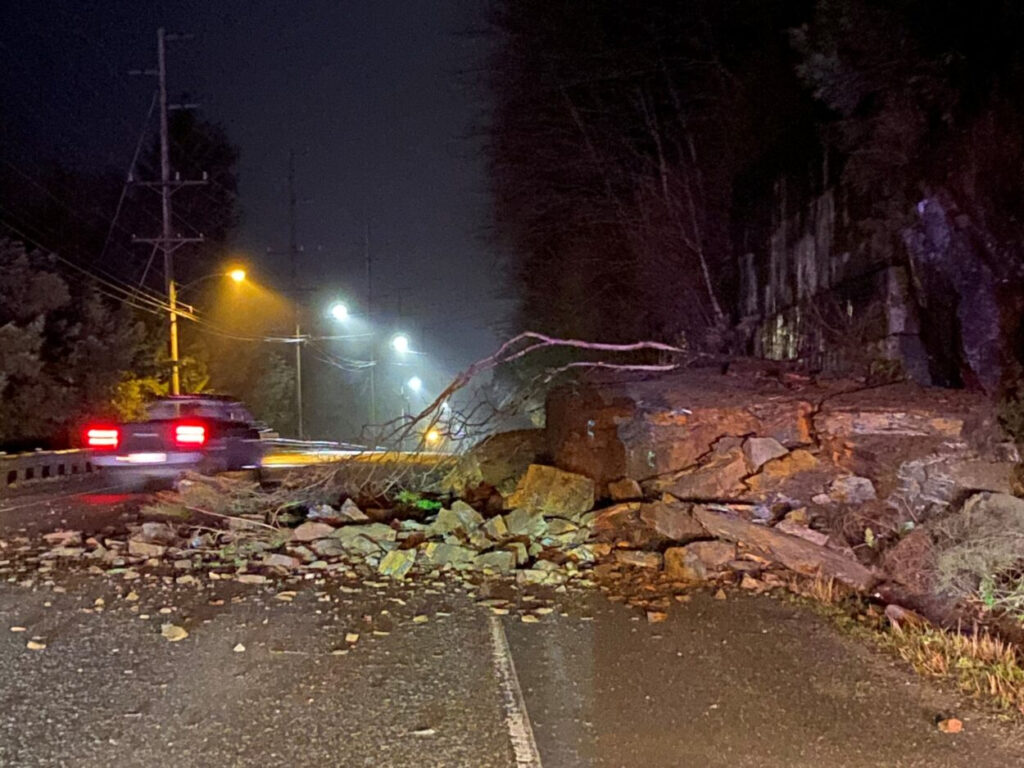On August 25, 2024, the picturesque town of Ketchikan, Alaska, found itself at the center of a tragic natural disaster. Known for its stunning landscapes and vibrant tourism, Ketchikan was hit by a landslide of unprecedented scale, resulting in the death of one person, injuries to three others, and significant damage to the town’s infrastructure. The catastrophe has prompted widespread evacuations and a state of emergency declaration, as the community grapples with the aftermath and braces for potential further danger.
The Devastating Event
The landslide struck Ketchikan, a city of approximately 14,000 residents, around 4 p.m. local time. The force of nature unleashed a torrent of debris, including snapped trees, toppled power poles, and a substantial amount of earth, crashing down on a hillside that overlooked several homes and businesses. The destruction was immediate and severe, with the landslide tearing through multiple properties and damaging essential roadways.
In the immediate aftermath, Ketchikan Mayor Dave Kiffer expressed his shock and sorrow: “In my 65 years in Ketchikan, I have never seen a slide of this magnitude. The loss of life that we have encountered is heartbreaking, and my heart goes out to those who lost their homes.” His sentiment reflects the profound impact of the disaster on the close-knit community, as residents face the harsh reality of a changed landscape.
Casualties and Injuries

The landslide claimed the life of one individual, whose identity has yet to be released. In addition, three people sustained injuries. According to the city’s update, one of the injured was treated and released, while the other two required hospitalization. Thankfully, all residents have been accounted for, but the extent of the damage has left the community in a state of shock and grief.
Emergency responders and medical personnel have been working diligently to provide aid and support to those affected. The city has set up an emergency shelter at a local high school to accommodate displaced residents and offer immediate relief. The American Red Cross has also deployed teams to assist in the recovery efforts.
Evacuations and Ongoing Concerns
As authorities assess the situation, a mandatory evacuation order has been issued for residents in the affected areas. City officials are particularly concerned about the possibility of a secondary landslide, which could be triggered by the unstable conditions in the vicinity of the original slide. This precautionary measure aims to ensure the safety of residents as further assessments are conducted and potential hazards are addressed.
The National Weather Service in Juneau attributes the landslide to a period of heavy rainfall. Over approximately 30 hours, Ketchikan received between 5 and 9 inches of rain in the higher elevations of the Ketchikan Range, while the airport recorded 2.5 inches. This rainfall far exceeded the average for August, contributing to the destabilization of the hillside and subsequent landslide.
Although the intense downpours have subsided, light to moderate showers are expected to continue through Monday afternoon, potentially exacerbating the risk of further slides. Emergency crews are on high alert, ready to respond to any new developments as the situation evolves.
Infrastructure Damage

The landslide has caused extensive damage to Ketchikan’s infrastructure. Power outages have been widespread, with many homes and businesses left without electricity. KPU Electric, the local utility provider, reported that power lines were downed, and six power poles remain unrepaired due to safety concerns. This disruption has also affected phone and internet services in the area, further complicating communication and recovery efforts.
The slide blocked several roads, creating traffic delays and hindering access to affected areas. City officials have warned residents of ongoing road closures and advised them to avoid travel near the evacuation zones. Despite the challenges, efforts are underway to restore power and repair infrastructure as quickly as possible.
Government Response
In response to the disaster, Alaska Governor Mike Dunleavy issued a disaster emergency declaration for Ketchikan. In a statement posted on X (formerly Twitter), Governor Dunleavy assured residents that “all state agencies are directed to provide whatever assistance is needed.” His commitment to supporting the community during this crisis reflects the seriousness of the situation and the need for coordinated relief efforts.
Republican Senator Dan Sullivan has also expressed support for Ketchikan, emphasizing the readiness to facilitate federal assistance if necessary. Senator Sullivan’s engagement highlights the broader scope of response, involving both state and federal resources to aid in the recovery process.
Climate Change and Future Risks
Alaska’s unique geographic and climatic conditions make it particularly vulnerable to natural disasters. The state is experiencing climate change at more than twice the rate of the global average, leading to increased occurrences of floods, landslides, and other extreme weather events. Thinning glaciers, melting permafrost, and warming oceans contribute to the instability of the region’s landscapes, exacerbating the risk of such devastating incidents.
Ketchikan, situated along the Inside Passage, is renowned for its stunning fjords and glaciers, attracting tourists from around the world. However, the very factors that make it a sought-after destination also contribute to its susceptibility to environmental hazards. As climate change continues to impact Alaska, communities like Ketchikan must adapt and prepare for the increasing likelihood of such events.
Community and Recovery

In the wake of the landslide, the people of Ketchikan are coming together to support one another and rebuild. The response from first responders, medical personnel, volunteers, and local businesses has been crucial in providing immediate aid and resources to those affected. Mayor Kiffer and Borough Mayor Rodney Dial have both expressed their gratitude for the assistance and emphasized the importance of community solidarity during this challenging time.
The road to recovery will be long and arduous, but the resilience of Ketchikan’s residents and the support from various agencies and organizations offer hope for a successful rebuilding process. As the community works to address the immediate needs and plan for the future, the focus will remain on ensuring safety, restoring services, and aiding those impacted by the disaster.
Conclusion
The landslide that struck Ketchikan, Alaska, on August 25, 2024, serves as a stark reminder of the powerful forces of nature and the vulnerabilities of communities living in high-risk areas. As the city grapples with the aftermath, the combined efforts of local, state, and federal authorities will play a crucial role in navigating the challenges ahead. The disaster underscores the pressing need to address climate change and its impacts on vulnerable regions, ensuring that communities are better prepared for future events.
In the face of such adversity, the spirit of resilience and cooperation shines through, guiding Ketchikan toward recovery and renewal. The thoughts and prayers of many are with the residents of Ketchikan as they navigate this difficult time and work towards rebuilding their lives and their community.





